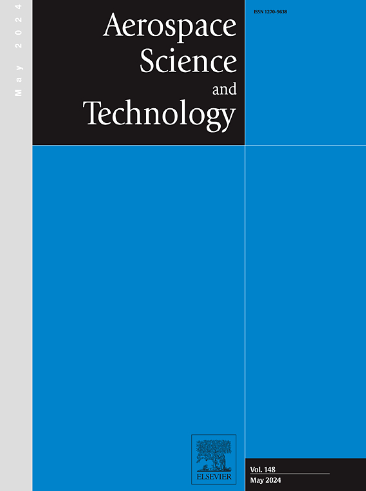关于争气式喷气燃烧器中单喷射器和多喷射器的燃烧特性和性能的数值研究
IF 5
1区 工程技术
Q1 ENGINEERING, AEROSPACE
引用次数: 0
摘要
本研究以数值方法研究了直连式气态氢燃料喷射燃烧器的燃烧特性和性能,具体取决于喷射器方案。采用改进的延迟分离涡模拟(IDDES)方法进行了全面的数值模拟。该框架采用了高阶精确数值方案,以确保结果的高保真性。结合两种喷射器方案和五种喷射压力条件,共考虑了十种情况。每种喷射器方案的全局等效比范围相似。数值结果显示了反向旋转涡对的局部动力学差异。多喷射器情况下没有保持喷流的系统涡旋结构,而该结构在燃料-空气混合和燃烧中起着主要作用。这是由于射流与射流壁表面之间的相互作用导致了动量的损失。多喷射器的这一特性使燃料与空气的混合接触面更接近于薄平面,从而使火焰固定在整个燃烧器的平面剪切层上。因此,在相似的当量比范围内,多喷射器的燃烧效率远低于单喷射器。目前的结果表明,多喷射器有望通过最大化燃料-空气接触面来提高燃烧性能,但在某些配置和条件下,其运行可能与其最初的预期相反。它还表明,要优化燃烧性能,就必须仔细设计喷油器分布,考虑喷油器与喷油器之间以及喷油器与壁之间的距离和相互作用。本文章由计算机程序翻译,如有差异,请以英文原文为准。
Numerical study on the combustion characteristics and performances of single and multi-injectors in a scramjet combustor
The present study numerically investigates the combustion characteristics and performance of a direct-connect gaseous hydrogen-fueled scramjet combustor depending on the injector scheme. A comprehensive numerical simulation was conducted with an improved delayed detached eddy simulation (IDDES) approach. The framework utilized a high-order accurate numerical scheme to ensure the high fidelity of the results. A total of ten cases were considered combining two injector schemes and five injection pressure conditions. Each injector scheme had a similar range of global equivalence ratios. Numerical results revealed the differences in the local dynamics of the counter-rotating vortex pair. The multi-injector case did not maintain the jet's systemic vortex structure, which plays a primary role in the fuel-air mixing and burning. It owes to the interactions between the jet-jet and the jet-wall surface, where the interaction leads to the loss of momentum. This characteristic of the multi-injector makes the fuel-air mixing contact surface get closer to a thin-flat layer, resulting in the flame being anchored on a flat shear layer over the entire combustor. As a result, the combustion efficiency of the multi-injector is much lower than that of the single injector under a similar equivalence ratio range. Present results indicate that the multi-injector, which is expected to increase the combustion performance by maximizing the fuel-air contact surface, may operate in contrast to its original anticipation under certain configurations and conditions. It also suggests that optimizing the combustion performance requires careful design of injector distributions considering the distances and interactions between injector-to-injector and injector-to-wall.
求助全文
通过发布文献求助,成功后即可免费获取论文全文。
去求助
来源期刊

Aerospace Science and Technology
工程技术-工程:宇航
CiteScore
10.30
自引率
28.60%
发文量
654
审稿时长
54 days
期刊介绍:
Aerospace Science and Technology publishes articles of outstanding scientific quality. Each article is reviewed by two referees. The journal welcomes papers from a wide range of countries. This journal publishes original papers, review articles and short communications related to all fields of aerospace research, fundamental and applied, potential applications of which are clearly related to:
• The design and the manufacture of aircraft, helicopters, missiles, launchers and satellites
• The control of their environment
• The study of various systems they are involved in, as supports or as targets.
Authors are invited to submit papers on new advances in the following topics to aerospace applications:
• Fluid dynamics
• Energetics and propulsion
• Materials and structures
• Flight mechanics
• Navigation, guidance and control
• Acoustics
• Optics
• Electromagnetism and radar
• Signal and image processing
• Information processing
• Data fusion
• Decision aid
• Human behaviour
• Robotics and intelligent systems
• Complex system engineering.
Etc.
 求助内容:
求助内容: 应助结果提醒方式:
应助结果提醒方式:


